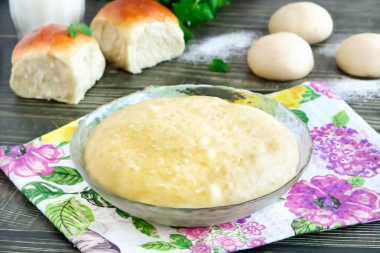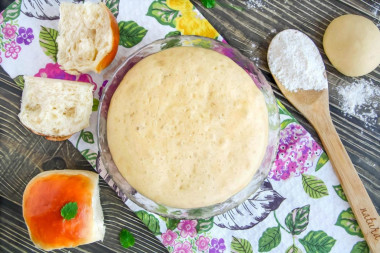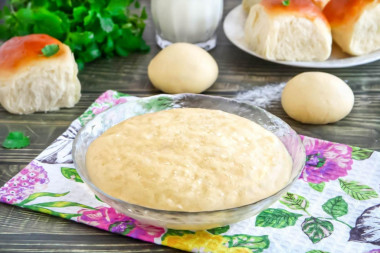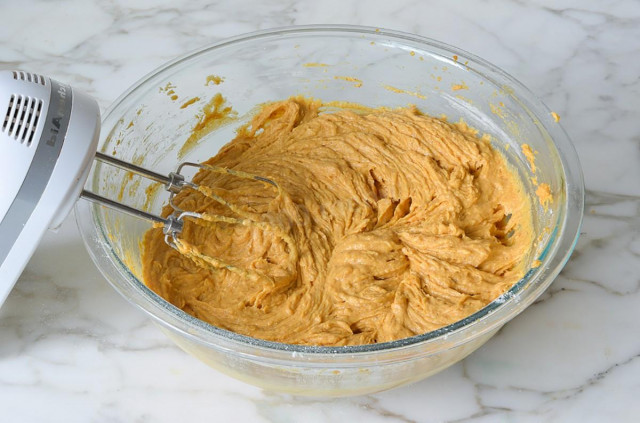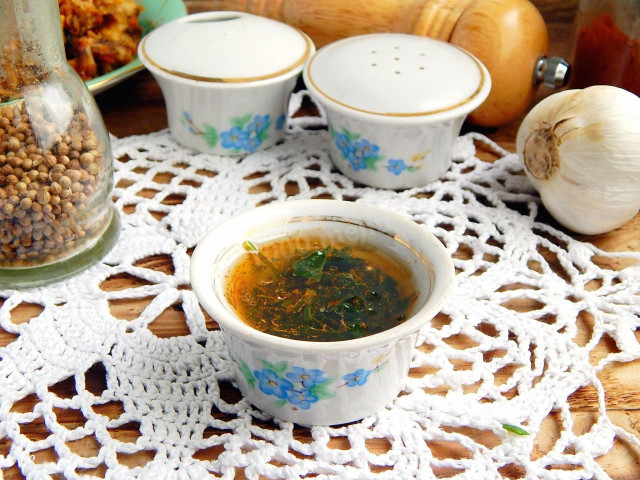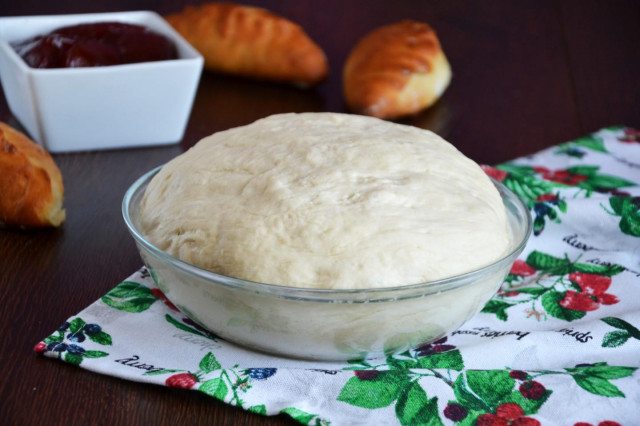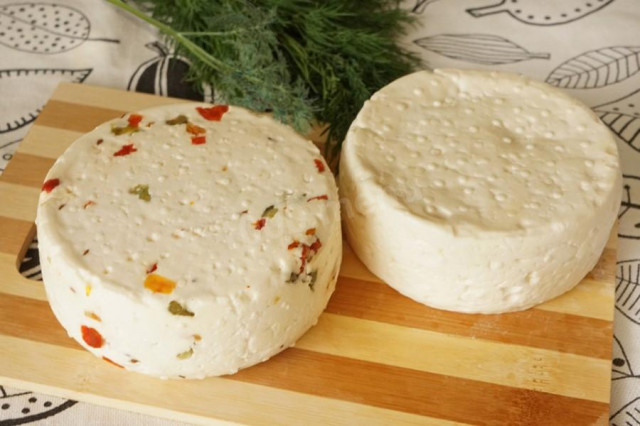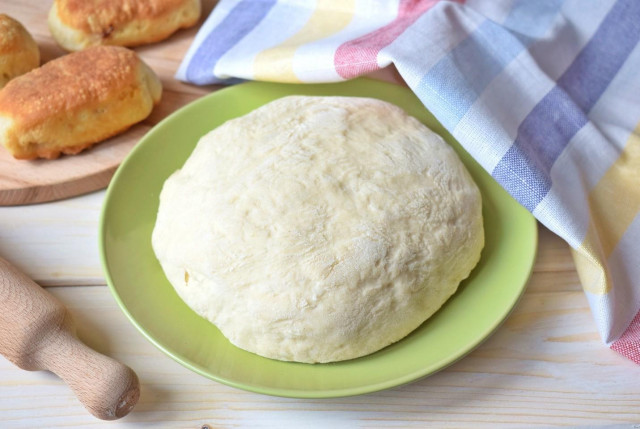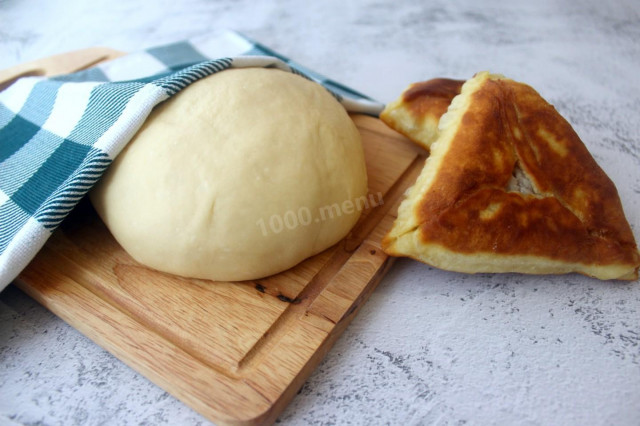Composition / ingredients
Step-by-step cooking
Step 1:
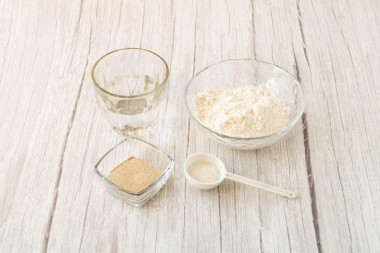
How to make bun dough like fluff? First, measure out the necessary ingredients for making sourdough. Heat the water slightly. Use wheat flour not lower than the highest grade (or extra). It is well suited for pastry.
Step 2:
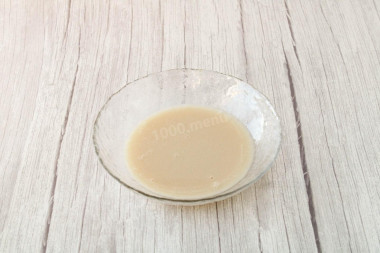
Dissolve yeast and sugar in warm water. The liquid in which the yeast is bred should be pleasant to the touch, no higher than 40 degrees. Why is this important? In a warm environment, yeast is well activated, in a hot one it will die, and in a cold one it simply will not work.
Step 3:
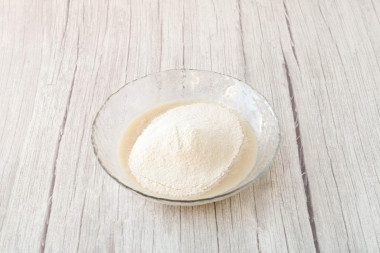
Sift flour into the dissolved yeast. Sifting will enrich the flour with oxygen. This will improve the work of the yeast, and the sourdough will rise faster.
Step 4:
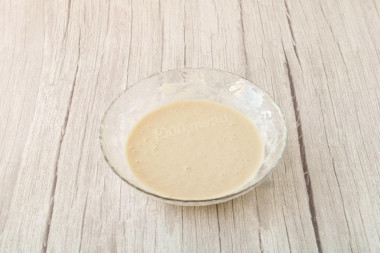
Mix everything well with a whisk until the lumps of flour disappear. The mass should be completely homogeneous, the consistency of thick sour cream. Cover the sponge with a towel and leave in a warm place to rise for 20 minutes.
Step 5:
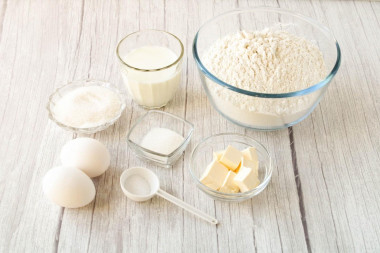
Meanwhile, prepare the rest of the products for making the dough. Remove the butter from the refrigerator in advance so that it becomes soft. Heat the milk slightly (to 37-38C).
Step 6:
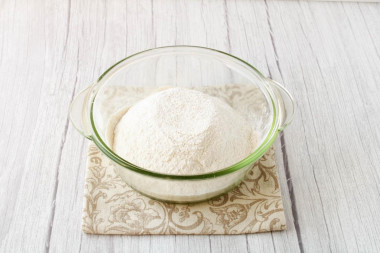
In a wide container with high sides, sift the flour so that it is saturated with oxygen. As a result, the dough will be easier and better to rise, and the baking will turn out lush and airy.
Step 7:

For kneading the dough, choose a sufficiently capacious container, taking into account that the dough will increase in volume. Combine the ingredients for the muffin. Beat the eggs with a whisk with sugar, salt and vanilla sugar until smooth.
Step 8:

Pour in warm milk, mix lightly.
Step 9:
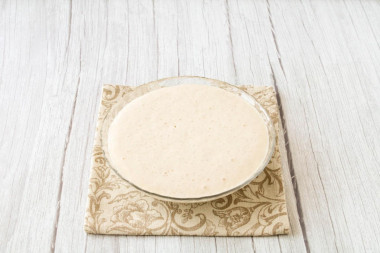
Sourdough rose well. A lot of "live" bubbles appeared on the surface. This means that the yeast has become active and started working. If this did not happen, then the fermentation process has not started (the yeast is overdue or spoiled). In this case, it is worth taking other yeast, otherwise baking will not work.
Step 10:
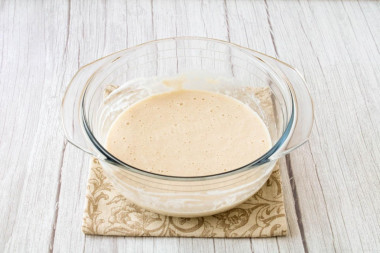
Add the sourdough to the prepared pastry mass, mix.
Step 11:
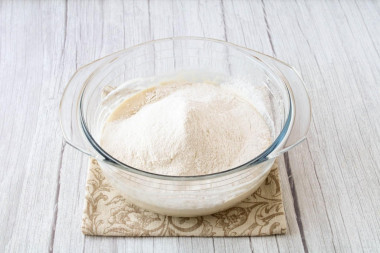
Add about 3/4 of the flour volume. Do not pour out all the flour at once, it may need more or less than the specified amount. It all depends on the properties and quality of the flour. Excessive addition of flour will make the dough steep and heavy on the rise. It will not make an airy and delicate baking.
Step 12:
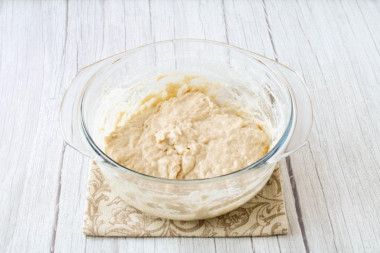
Mix the dough first with a spoon. It's still quite viscous.
Step 13:

Mix the softened butter into the dough.
Step 14:
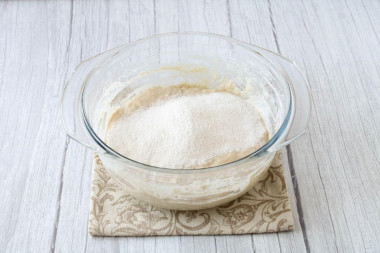
Add the rest of the flour in small portions, while stirring the dough with your hands. Observe its consistency, add flour if necessary. At first, the dough sticks noticeably to the hands, but as it is kneaded, it will become better to lag behind the walls of the bowl and its structure will become denser.
Step 15:
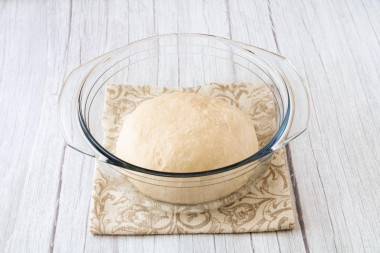
The dough turns out to be very tender, soft, slightly sticky. Lubricate the bottom and walls of the bowl with a small amount of vegetable oil, lay out the dough. Cover it with a towel and leave it in a warm place to rise.
Step 16:
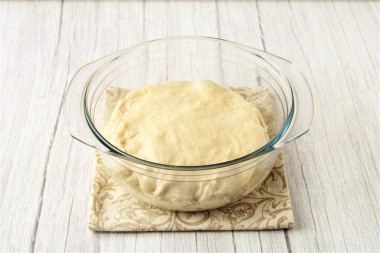
After 30-40 minutes, the dough will rise a little. Gently knead the dough. You can do it right in the bowl, crushing it against the walls. Leave the dough to rise further for about 60-70 minutes.
Step 17:
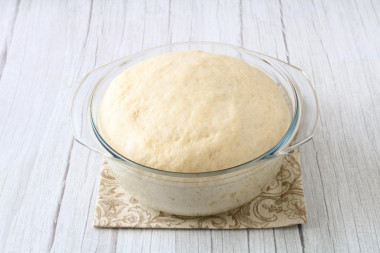
The dough fit well, increased in volume by 2.5 times. Bubbles breaking through on the surface serve as a signal that it is ready for cutting. You can form buns of any shape with or without filling.
Step 18:
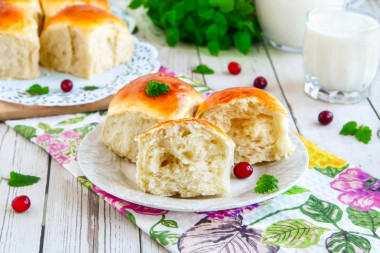
The buns are very tender, soft, with a porous crumb, really airy. Have a good baking!
Dry yeast can be replaced with fresh pressed yeast, based on the proportion of 1:3. That is, for 1 gram of dry yeast required by the recipe, you need to take 3 grams of fresh.
Be prepared for the fact that flour may need more or less than indicated in the recipe. Focus not on the amount of flour, but on the desired consistency of the dough. To avoid mistakes, read about flour and its properties!
Important! Using dry yeast, it should be borne in mind that they occur in two forms: active and instant (read the instructions carefully before use!).
Active dry yeast looks like beads or small balls. Before applying them, they must be brought out of the "sleep mode". To do this, the active yeast is diluted in warm sweet water, milk or whey. The resulting bubbles, foam or "cap" indicate that the yeast is ready for further use. Active dry yeast must be brought to complete dissolution in the liquid, otherwise, due to the remaining grains, the dough may not rise and the baking will be spoiled (yeast grains that have not dissolved in the liquid and got into the dough will not disperse on their own, which means they will not work).
Instant dry yeast is easier to use. They do not need to be activated before use. Such yeast, along with other ingredients, is simply added to the dough. As a result, the baking time is reduced.
It should also be remembered that both types of dry yeast may differ in their activity from different manufacturers.
Caloric content of the products possible in the composition of the dish
- Whole cow's milk - 68 kcal/100g
- Milk 3.5% fat content - 64 kcal/100g
- Milk 3.2% fat content - 60 kcal/100g
- Milk 1.5% fat content - 47 kcal/100g
- Concentrated milk 7.5% fat content - 140 kcal/100g
- Milk 2.5% fat content - 54 kcal/100g
- Chicken egg - 157 kcal/100g
- Egg white - 45 kcal/100g
- Egg powder - 542 kcal/100g
- Egg yolk - 352 kcal/100g
- Ostrich egg - 118 kcal/100g
- Granulated sugar - 398 kcal/100g
- Sugar - 398 kcal/100g
- Butter 82% - 734 kcal/100g
- Amateur unsalted butter - 709 kcal/100g
- Unsalted peasant butter - 661 kcal/100g
- Peasant salted butter - 652 kcal/100g
- Melted butter - 869 kcal/100g
- Salt - 0 kcal/100g
- Water - 0 kcal/100g
- Wheat flour - 325 kcal/100g
- Vanilla sugar - 379 kcal/100g
- Dry yeast - 410 kcal/100g


